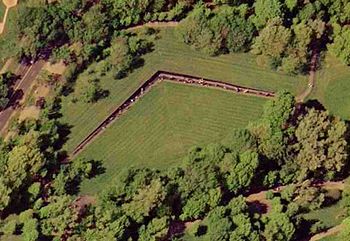Memorials
| Art Appreciation and Techniques (#ART100) | |
|---|---|
| Art and our world | Overview | Introduction | Identity | Self-portraits | The natural world | Social and collaborative art | Politics, conflict and war | Memorials | Peace | Summary |
The aftermath of war gives rise to memorials as vessels of remembrance for those who died. They are literally touchstones for families, friends, communities and entire nations to grieve. As works of art they provide a public space of honor and resolve to never forget the lives and sacrifices made by those who go to war.
The Vietnam Veterans Memorial in Washington, D.C. (below) is an example. Designed by the architect and sculptor Maya Lin, its abstract formal design, wedge shape and placement created a new approach to traditional memorial design ideas. The work is set into an earthen embankment facing out to the viewer. It’s made with a dark gabbro stone that when polished produces a highly reflective surface. The names of 58,191 soldiers killed or missing during the conflict are cut into the stone face. Visitors walk a gently descending pathway towards the center of the memorial, the wall of names becoming larger as you go, to a height of ten feet at the middle. As they stare at the rows of names on the wall visitors see their own image reflected back. The path rises as you walk toward the other end.

